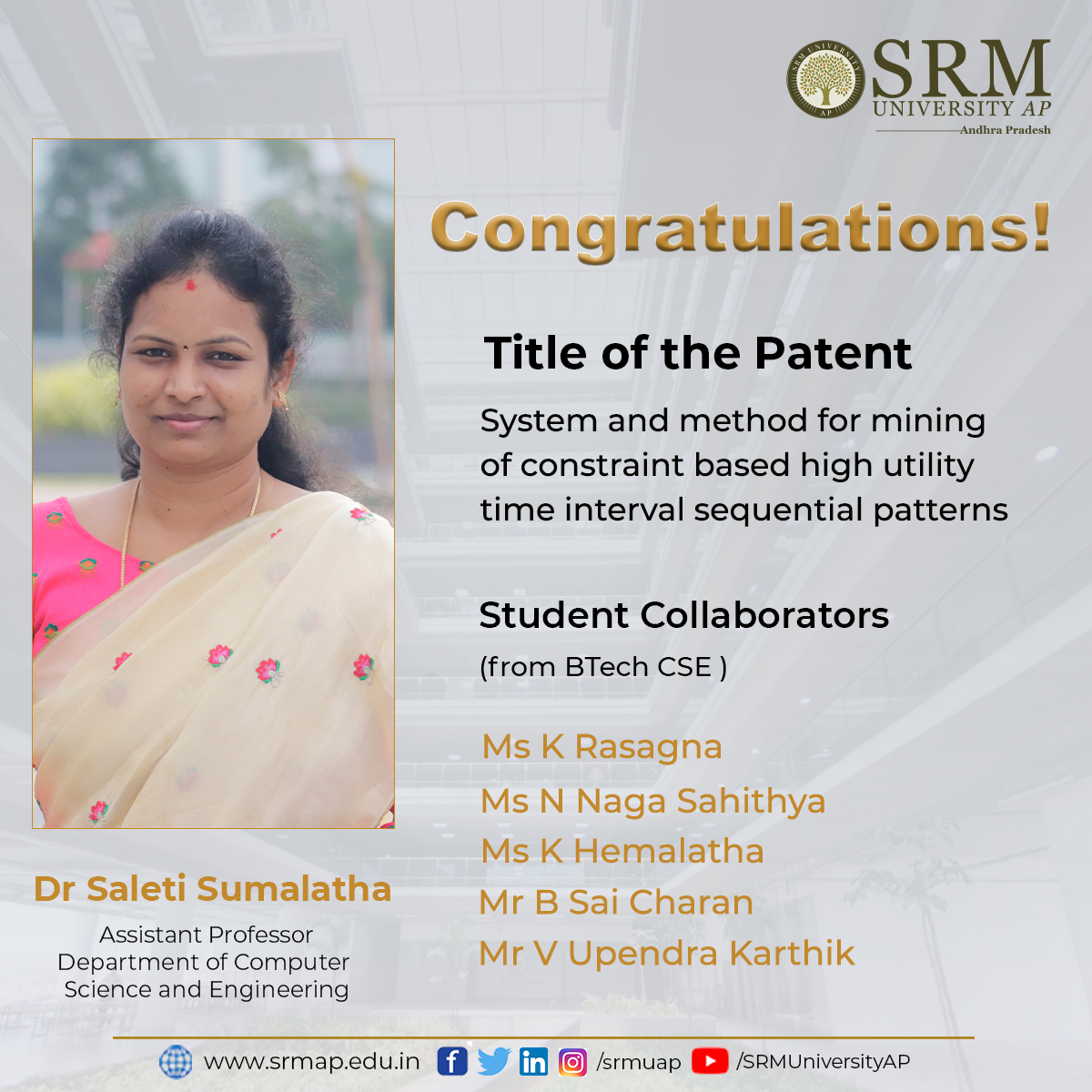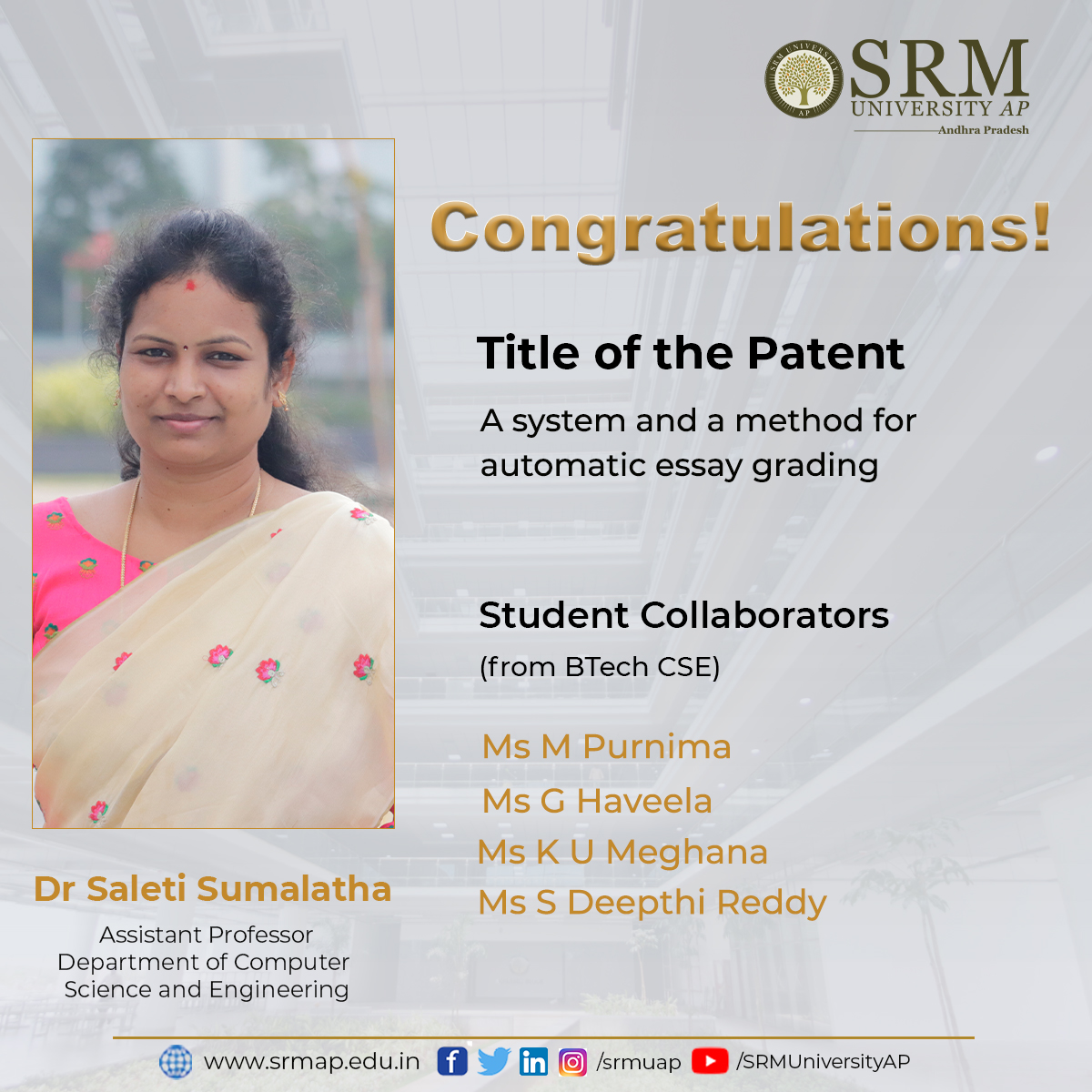
The Department of Computer Science and Engineering is glad to announce that Assistant Professor Dr Saleti Sumalatha and her students got two of their patent applications published in a row. The patent titled “System and method for mining of constraint based high utility time interval sequential patterns” (Application number: 202241044001) was published in collaboration with the BTech students; K Rasagna, N Naga Sahithya, K Hemalatha, B Sai Charan, and Upendra Karthik.
The main intention of the proposed system is to discover the sequences that include the time period between the purchases of each item. For example, if we consider a shop which sells some groceries like Grains, Milk, Yogurt, Bread and Eggs as the set of items in the database. Now, the main aim is to find the time period between the purchases of particular items that are being sold. From this, the shop owner can easily maintain the stock of completed items according to the time period.
For example, an output sequential pattern including time intervals of the form indicates that a customer who purchased item x also bought item y after three months and visited the store again after five months to buy item z. It considers the same utility threshold for each of the items in the database, which shows that each item is assumed to have the same unit profit. This is not convincing as each item is different in real-time applications and should not be treated equally. For example, the sales of” Gold bangles” will produce more profit than the sales of” Cotton Jeans”. In view of this, the research proposes UIPrefixSpan-MMU.

The other patent titled “A system and a method for automatic essay grading” (Application number: 202241043045) was published in collaboration with M Purnima, G Haveela, K U Meghana, and S Deepthi Reddy. Essay grading systems are being adopted by different organisations to reduce the hectic workload from a teacher’s point of view. They made a model which is trained with datasets containing different essay topics and numerous essays with scores varying in a wide range.
Essay grading systems will not only save the time for evaluation but also give accurate results. The output of the system will be quick such that it could evaluate many essays and get trained. This system benefits both the student and the teacher as well. Their model predicts the scores of the essay by comparing them with the features extracted from the trained data. This model can be used to reduce the effort of teachers to grade many essays in a limited time. The work of grading will be fastened and accurate.

